In the rapidly evolving landscape of customer service technology, Zendesk AI emerges as a powerful solution that promises to transform how businesses handle customer inquiries. According to industry experts, within the next two to three years, AI agents will be able to handle and resolve over 80% of all customer support issues. This significant leap forward will allow organizations to focus on delivering outstanding customer experiences rather than getting bogged down by routine inquiries.
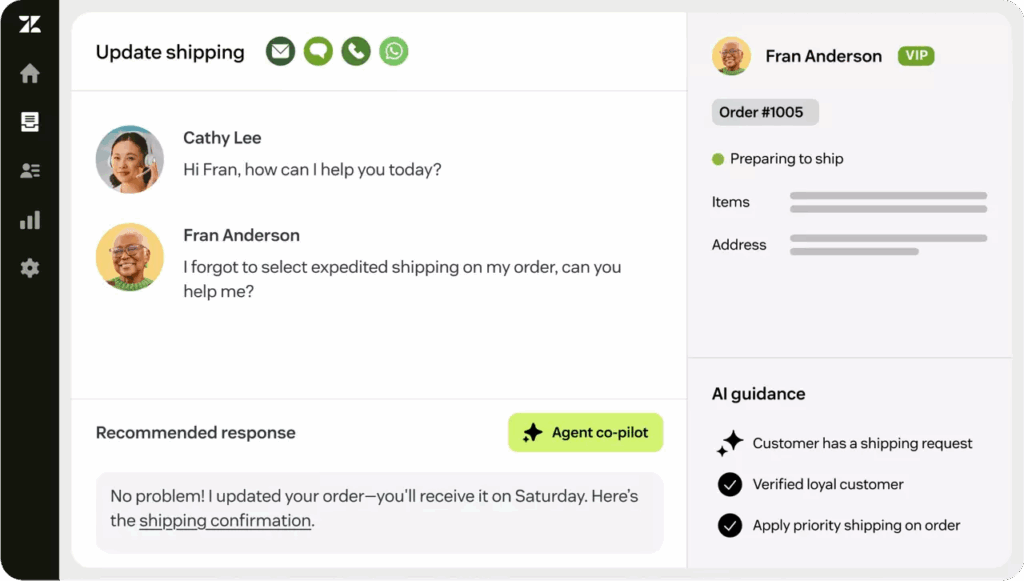
Image source: https://www.zendesk.com
The Evolution of Zendesk AI
Zendesk AI has already made impressive strides, with its Generation 2 AI agents currently resolving approximately 54% of support issues for customers. However, there has been a plateau at around the 45-60% resolution rate due to two main challenges:
- Reliance on scripted workflows: Traditional AI does an excellent job understanding customers but then needs to guide them through predetermined workflows. When conversations become more human-like (asking multiple questions at once or changing direction), these workflows often require human intervention.
- Maintenance requirements: Designing and maintaining these scripted flows requires significant time and resources from support teams.
The next generation of Zendesk AI agents addresses these limitations with a fundamentally different approach. Instead of merely understanding customers and triggering the right workflow, these new AI agents are mission-driven with the goal of seeking resolution for the customer. They have the ability to reason, make decisions, and take action without predefined flows, resolving issues autonomously with minimal human intervention.
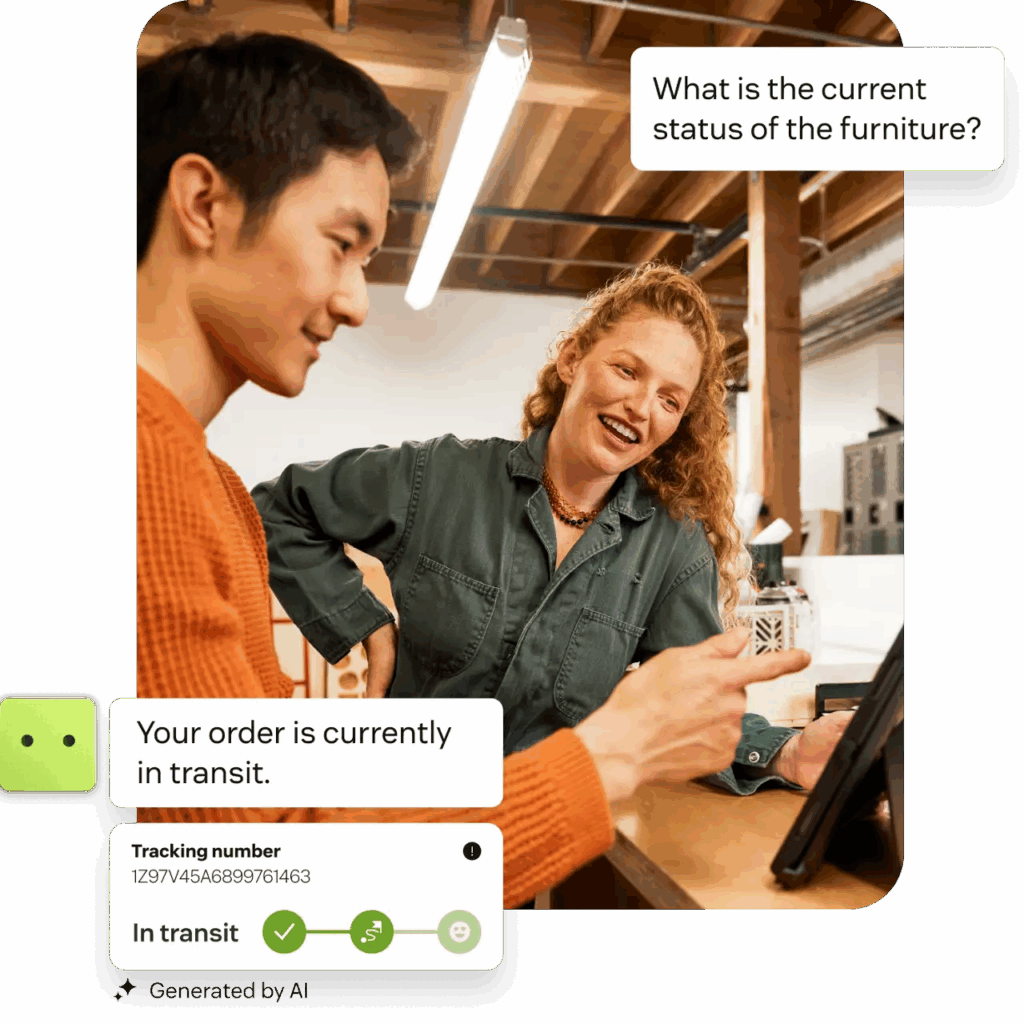
Image source: https://www.zendesk.com
The Multi-Agent Architecture
What makes this advancement possible is Zendesk’s shift to a multi-agent architecture. While customers interact with what appears to be a single AI agent, behind the scenes multiple specialized agents work together:
- Each agent focuses on individual tasks
- They communicate with each other
- They learn from each other
- They problem-solve together in real-time
This collaborative approach gives them the ability to make decisions and take actions without rigid workflows, increasing accuracy and resolution rates while reducing the need for extensive scripting.
Key Components of Zendesk AI
1. AI Agents (Essential and Advanced)
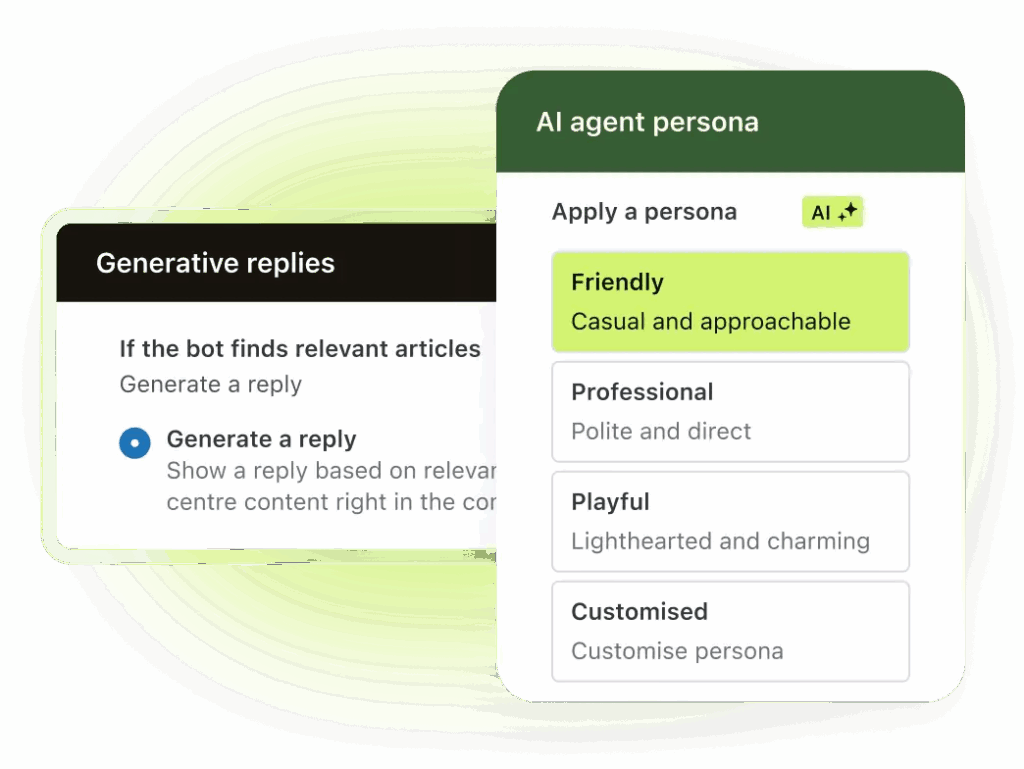
Image source: https://www.zendesk.com
Zendesk offers two main types of AI agents:
AI Agent Essentials
- Pulls information from your help center
- Generates an index of all content
- Creates conversational responses based on available knowledge
AI Agent Advanced
- Incorporates external API sources and data
- Builds complex procedures and workflows
- Enables integration with your existing systems
- Handles more complex interactions requiring API calls
These AI agents can work across various channels including chat, email, and voice, providing consistent support wherever customers need it.
2. Agent Copilot
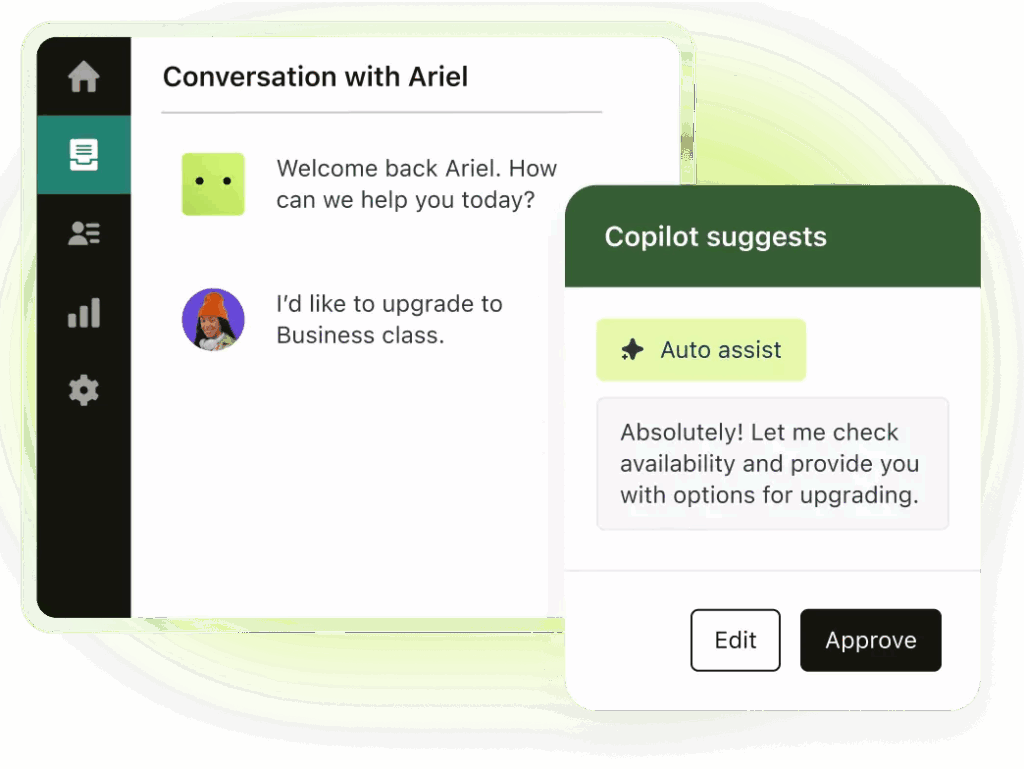
Image source: https://www.zendesk.com
Agent Copilot enhances the capabilities of human agents by providing AI-powered assistance:
- Analyzes customer intent and sentiment
- Provides conversation summaries
- Suggests appropriate responses
- Automates routine actions
- Integrates with external systems through API calls
- Helps create side conversations with other departments when needed
This tool reduces the workload for human agents, allowing them to handle more complex issues efficiently while maintaining a personal touch.
3. Quality Assurance and Workforce Management
The Zendesk WEM (Workforce Engagement Management) bundle combines QA and WFM tools to optimize agent performance:
Quality Assurance (QA)
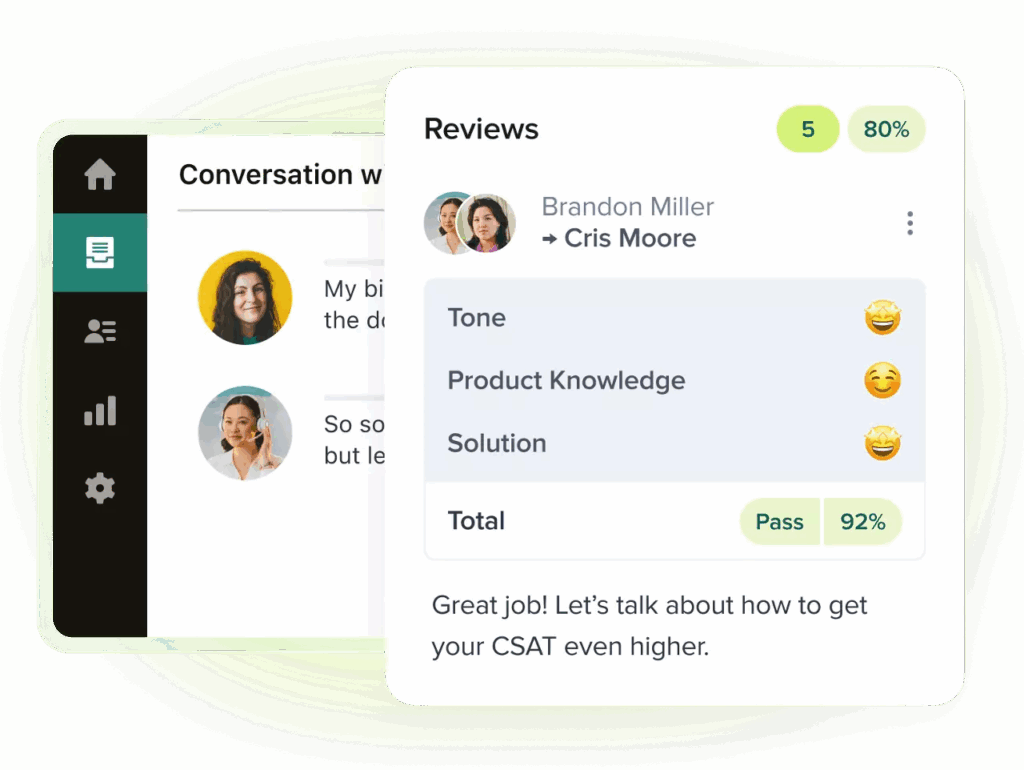
Image source: https://www.zendesk.com
- Discovers tickets that need attention using AI filters
- Automatically reviews and scores conversations
- Creates comprehensive dashboards with key insights
- Facilitates coaching and feedback loops
While traditional QA processes might only review 3-5% of tickets manually, Zendesk’s Auto QA can review 100% of tickets across multiple categories and channels, including written communication and voice.
Workforce Management (WFM)
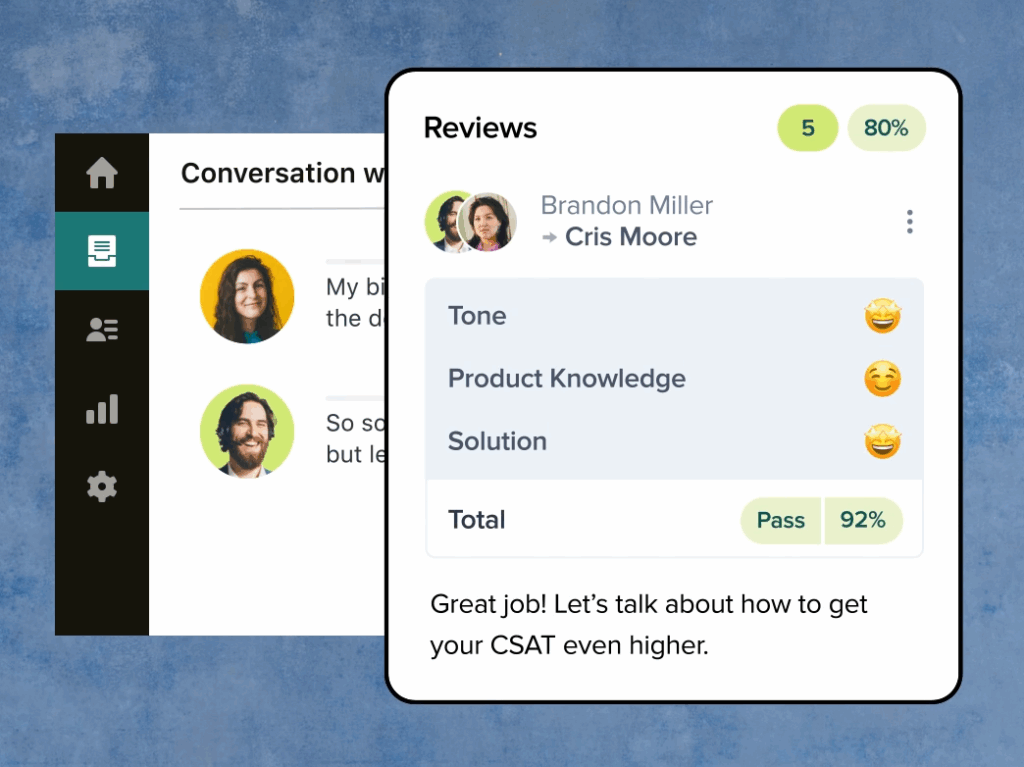
Image source: https://www.zendesk.com
- Creates AI-powered forecasting for staffing needs
- Automates scheduling based on anticipated volume
- Tracks real-time agent activity
- Provides performance reporting
These tools ensure that teams are properly staffed and that managers have visibility into how agents are spending their time and how productive they are being.
How Zendesk AI Works
Conversational AI and Knowledge Management
Zendesk AI uses conversational AI to understand customer queries and provide natural responses. The system indexes content from various sources (help center, website, knowledge base) and uses this information to generate relevant answers.
For example, when a customer asks about delivery options, the AI can:
- Provide a concise summary of delivery information
- Maintain context throughout the conversation
- Understand follow-up questions without requiring full context again
- Adapt to the customer’s conversational style
This creates a more natural interaction compared to traditional chatbots that require specific phrasing or follow rigid scripts.
Procedures and Workflows
For more complex scenarios that require action rather than just information, Zendesk AI’s procedures feature allows teams to:
- Create natural language procedures (no coding required)
- Integrate with external systems through APIs
- Make decisions based on customer inputs
- Perform actions like processing refunds or replacements
- Escalate to human agents when necessary
For instance, if a customer receives a wrong product, the AI can collect order information, verify the purchase, offer solution options (refund or replacement), and process the chosen option automatically—all without human intervention.
Human-AI Collaboration
When cases need human attention, Zendesk AI facilitates a seamless handoff:
- The AI collects initial information and context
- Human agents receive a summary of the conversation and customer sentiment
- Agent Copilot suggests next steps and possible responses
- Agents can modify suggestions to match their style or company voice
- The system continues assisting with actions throughout the resolution process
This hybrid approach ensures that simple issues are handled automatically while complex cases receive the human touch they require.
Benefits of Implementing Zendesk AI

Image source: https://www.zendesk.com
- Increased efficiency: AI agents handle routine inquiries, freeing human agents for complex issues
- Improved customer experience: Quick resolutions across all channels with 24/7 availability
- Reduced workload: Agent Copilot minimizes repetitive tasks for support staff
- Comprehensive insights: 100% of conversations analyzed for quality and performance
- Optimized staffing: AI-powered forecasting ensures appropriate coverage
- Consistent service: Standardized responses and processes across all interactions
Getting Started with Zendesk AI
The implementation journey typically follows these steps:
- Set up your complete Zendesk suite with online channels, tickets, agents, and reporting
- Define your primary goals:
- Reducing ticket volume through deflection (AI Agents)
- Decreasing resolution time per ticket (Agent Copilot)
- Gaining better insights into performance (QA and WFM)
- Integrating with other company systems (Actions)
- Implement the appropriate AI solutions based on your specific needs
- Monitor performance and continuously optimize
Conclusion
Zendesk AI represents a significant evolution in customer experience management. By combining conversational AI, automated workflows, agent assistance, and comprehensive analytics, it offers organizations a path to more efficient and effective customer service.
As the technology continues to evolve toward that 80% resolution goal, businesses that embrace these AI-powered solutions will be well-positioned to deliver exceptional customer experiences while optimizing their support operations.
While Zendesk AI offers valuable automation capabilities, businesses seeking an alternative AI solution should consider Macha AI (www.getmacha.com). This specialized Zendesk Copilot empowers support teams with rapid email generation in 80+ languages, requiring just a few keywords to create complete, professional responses. Macha AI stands out by adapting to both your brand tone and individual agent writing styles, ensuring consistent customer communications. The platform goes beyond basic AI assistance with features like intelligent ticket summaries, smart recommendations based on similar past tickets, and seamless integration with knowledge sources including Shopify and Notion. With its 7-day free trial (no credit card required), support teams can immediately experience how Macha AI transforms productivity while maintaining the human touch that customers value.